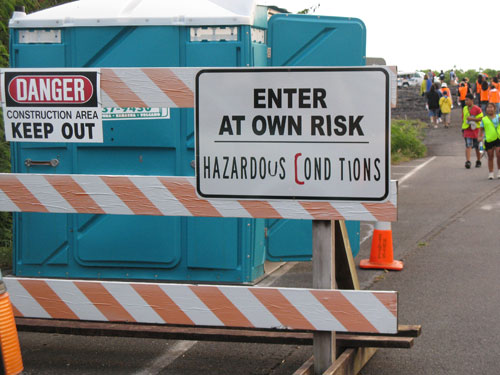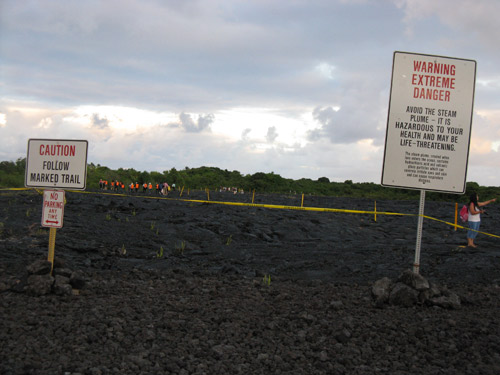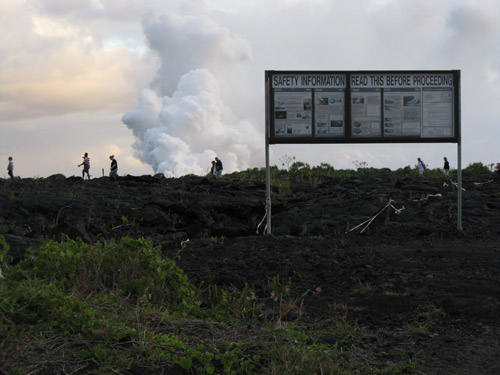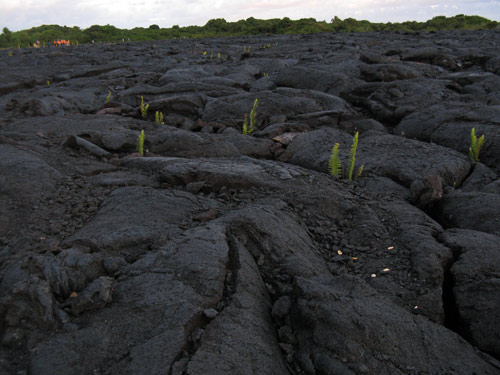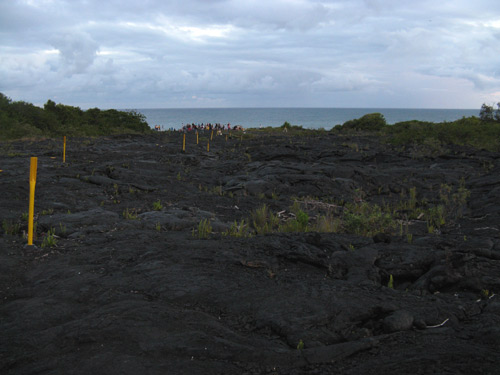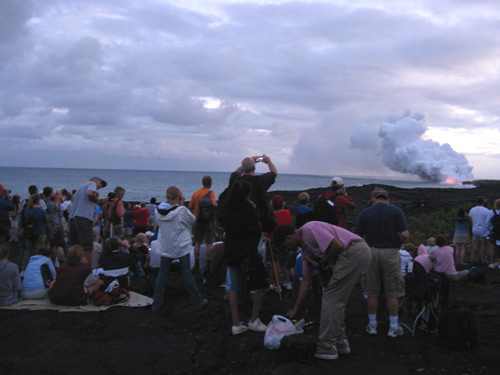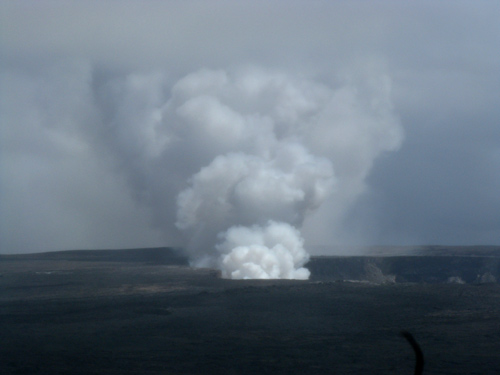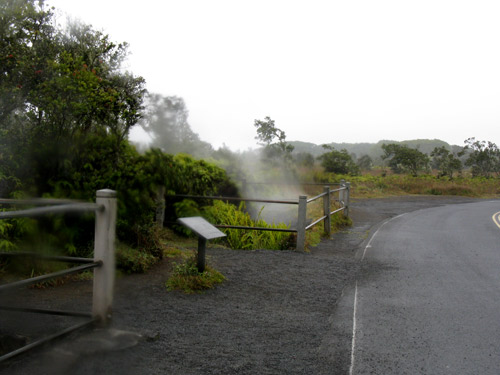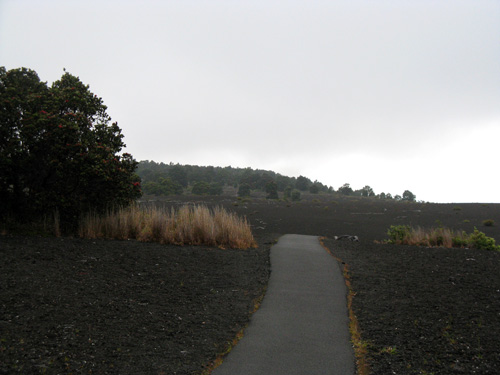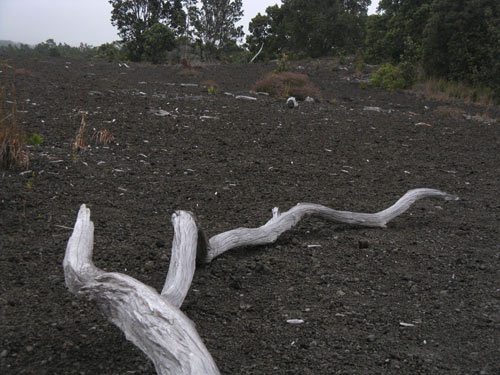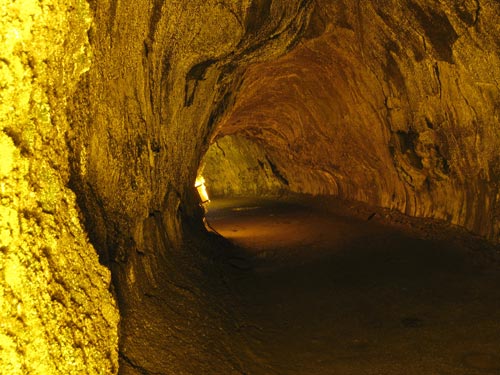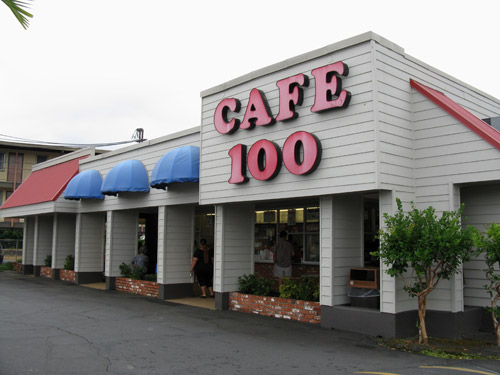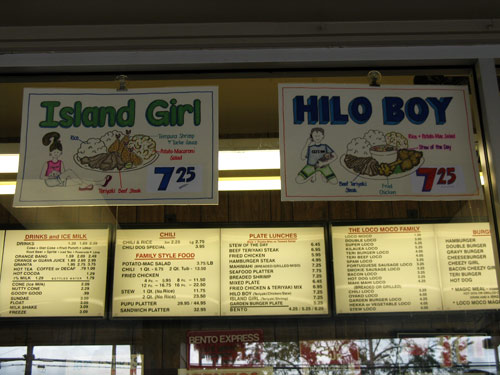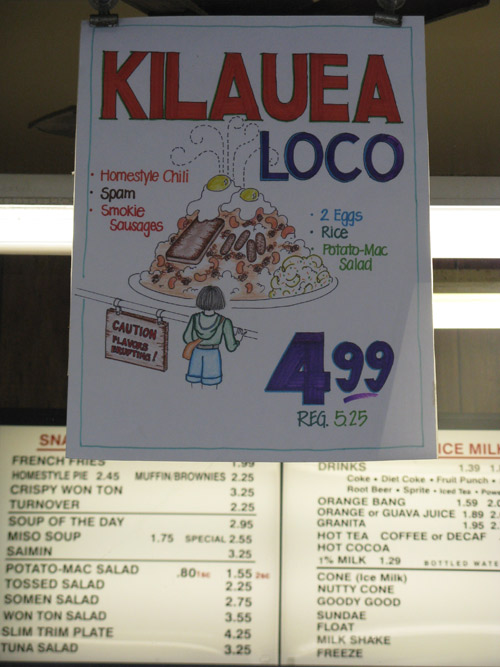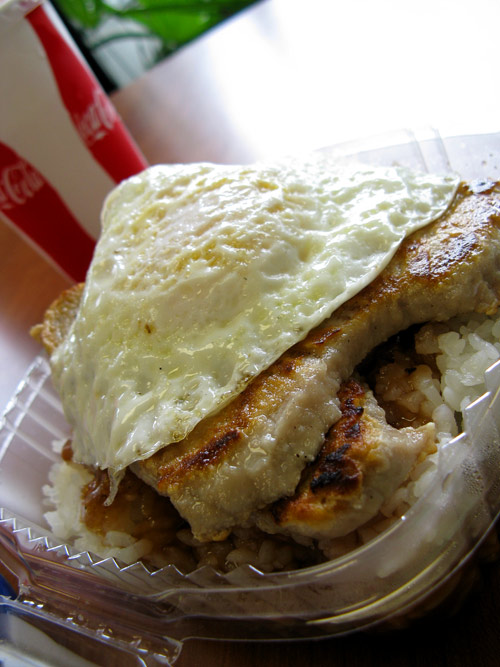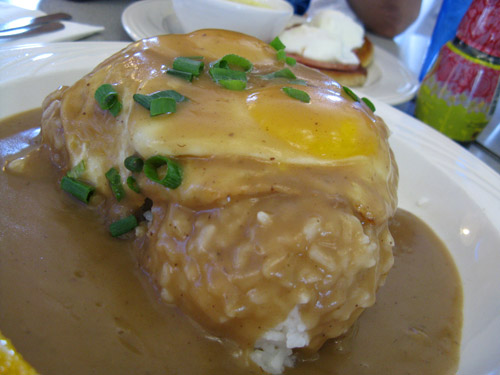Tag: Hilo
Go with the flow
The Big Island is so called because it is the biggest of the archipelago — hundreds in all, eight “main” islands. At 4,030 square miles, about three-quarters the size of Connecticut, it is larger than the other Hawaiian islands combined, and constantly increasing in land mass due to Kīlauea, perhaps the world’s most active volcano, which has continued to pour lava into the ocean since 1983.
The spectacle of red molten lava hitting the water in blooming clouds of steam draws crowds every night. As the park rangers (and many signs) are quick to warn, trekking out to the view point is something done at your own risk.
Setting foot on this newly formed, perhaps not entirely stable, land is a disconcerting experience: 23 acres of land fell into the ocean last May; over several hours in November 2005, 44 acres of coastline disappeared in segments — the largest collapse since Kīlauea Volcano began its current eruption, and a collapse which included a park station and a segment of the original road out to the lava flow lookout point.
We drove out over a road washed over in parts in hardened lava and hiked half a mile over jagged black rock as we waited for sunset.
Check out the video below — spectacular!
Hawai’i Volcanoes National Park
Hawai’i Volcanoes National Park is a site on UNESCO’s World Heritage List and the most popular attraction on the Big Island, offering a glimpse of landscapes unseen anywhere else. From desolate stretches of volcanic rock and ash to lush green rainforests, from oozing lava to belching clouds of sulfur and hissing steam, it’s a tangible reminder of how actively the Earth continues to evolve.
Since a small eruption in March, the Halema`uma`u Crater has been spewing clouds of sulfur dioxide gas into the air resulting in the partial closure of Crater Rim Drive:
Steam forced to the surface when rainwater seeps into the ground, meeting with hot rock below:
In 1959, an eruption in Kīlauea Iki Crater shot fountains of lava over 1100 feet high, blanketing this area along what is now known as the Devastation Trail. The patches of vegetation are the result of land left to regenerate on its own, as a kind of experiment.
Thurston Lava Tube — an approximately 500 year old cave-like channel formed when slow-moving lava developed a hardened upper crust, forming a roof above the still-flowing lava stream. This segment of the tube is lit (another 1000 feet — open to the public, but blocked off by a chain link gate — is not), with ferns the only vegetation, sprouting up around the edges of the lights.
Check out the rest of the Hawai’i Volcanoes National Park photos on flickr.
Do the Loco Moco
Hawaiian cuisine is a reflection of the various ethnic groups that have immigrated to the islands over the past couple of centuries: strongly Asian-influenced — Japanese, Chinese, Filipino, Korean — and with an emphasis on local ingredients. (See: poi… though I only ever actually saw the well-known Hawaiian dish on the menu at the two lua’aus we attended.)
Given the easy access to fresh seafood and fruits, I was somewhat surprised by how starchy and heavy most of the local dishes were. Though this does explain why a staggering 39 percent of the native Hawaiian population is obese.
Case in point: Cafe 100, which we visited on our one day in Hilo.
After dropping off the kayaks just after dawn, we raced two and a half hours to the other side of the Big Island for my much anticipated helicopter tour over the active volcanoes. Alas, however, the heavy cloud cover that morning resulted in my ride being canceled at the last minute. Instead, we settled for an early lunch at this Hilo institution.
The Miyashiro family opened Café 100 six decades ago. According to our guidebook, the restaurant, now in its third incarnation, survived destruction by tsunamis in 1946 and 1960. It was named for the original owner’s World War II comrades in the famed 100th Battalion — a Honolulu-based unit comprised predominantly of Japanese Americans.
Café 100 is really more of a fast food stop than a café: open air tables and a simple counter where the staff still take down the orders with pen and paper and end every transaction with a cheery “Mahalo.”
Besides its tasty, cheap eats, the place is most notable for its role in popularizing the Islands specialty “Loco Moco”: a local dish comprised of a mountain of white rice topped with a hamburger patty, brown gravy and an egg or two. Loco Moco was invented in Hilo, though whether by Richard Miyashiro of Café 100 (as I’d read) or by Richard and Nancy Inouye of Lincoln Grill is a matter of some debate.
Other dishes on the menu include the ubiquitous “potato mac salad” — yes, exactly what it sounds like — daily “mixed plate” lunch specials and more standard mainland fare such as cheeseburgers and fried chicken. Not refined fare, by any means, but all fast, fresh and good. And did I mention cheap?
Café 100’s Loco Moco is offered in many variations (14, at my count), substituting the beef patty for Spam (of course), “smokie” [sic] Portuguese sausage, hot dog, kalua pig, or fish — here, the mahi mahi. Or was that the ahi?
And below, a photo of our Loco Moco from Kailua-Kona’s Big Island Grill the day before. We hadn’t packed a defibrillator for this trip, so after these two hearty samples, we called a moratorium on the Loco Moco for the remainder of the vacation.
| S | M | T | W | T | F | S |
|---|---|---|---|---|---|---|
| 1 | 2 | 3 | 4 | |||
| 5 | 6 | 7 | 8 | 9 | 10 | 11 |
| 12 | 13 | 14 | 15 | 16 | 17 | 18 |
| 19 | 20 | 21 | 22 | 23 | 24 | 25 |
| 26 | 27 | 28 | 29 | 30 | 31 | |
Search
Popular Tags
Categories
Archive
- July 2010
- July 2009
- January 2009
- November 2008
- September 2008
- August 2008
- July 2008
- June 2008
- May 2008
- April 2008
- March 2008
- February 2008
- January 2008
- December 2007
- November 2007
- October 2007
- September 2007
- August 2007
- July 2007
- June 2007
- May 2007
- April 2007
- March 2007
- February 2007
- January 2007
- December 2006
- November 2006
- October 2006
- September 2006
- August 2006
- July 2006
- June 2006
